|
|
|

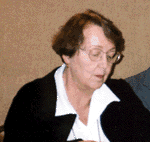 The Kingdom of Croatia, Slavonia, and Dalmatia Circa 1900: Politics, Culture, and Economics and the other Music and Drama in Croatia From the Middle Ages to the National Revival.
The Kingdom of Croatia, Slavonia, and Dalmatia Circa 1900: Politics, Culture, and Economics and the other Music and Drama in Croatia From the Middle Ages to the National Revival.  the Association any longer. Now that he is officially retired, he is involved in too many activities. The following people were elected as the new officers of the ACS: Dr. Ante Cuvalo, President; Dr. Nick Ceh, Secretary-Treasure, and Dr. Jasna Meyer, Vice President.
the Association any longer. Now that he is officially retired, he is involved in too many activities. The following people were elected as the new officers of the ACS: Dr. Ante Cuvalo, President; Dr. Nick Ceh, Secretary-Treasure, and Dr. Jasna Meyer, Vice President. 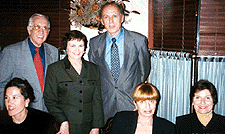 in St. Louis. Those were: Prof. Jasna Krizanec, Prof. Nevenka Mitra, Dr. Frances and Mr. Herry Irwin, Dr. Ksenija Kos, Dr.Danijela Mataic, Vivian Kuchner Sara, Judy Feldworth, Jerry Buterin, Dr. Nick Ceh from the University of Wisconsin, and Mrs. Jasna Lizatovic from Split. Special thanks to the Meyer family, Prof. Nasja, Dr. Arthur and Dr. Jasna, for their sacrifices in helping to make our stay in St. Louis very enjoyable. We are also very thankful to the young Croatian students, Christy Kranjec, Robert Matijasec, and Tomislav Matijasec, for helping with the book exhibit.
in St. Louis. Those were: Prof. Jasna Krizanec, Prof. Nevenka Mitra, Dr. Frances and Mr. Herry Irwin, Dr. Ksenija Kos, Dr.Danijela Mataic, Vivian Kuchner Sara, Judy Feldworth, Jerry Buterin, Dr. Nick Ceh from the University of Wisconsin, and Mrs. Jasna Lizatovic from Split. Special thanks to the Meyer family, Prof. Nasja, Dr. Arthur and Dr. Jasna, for their sacrifices in helping to make our stay in St. Louis very enjoyable. We are also very thankful to the young Croatian students, Christy Kranjec, Robert Matijasec, and Tomislav Matijasec, for helping with the book exhibit. 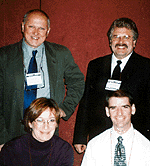 companies, and scholarship in Croatia during the 1990s. Musical examples by Milko Kelemen, Adalbert Markovic, Zoran Juranic, Frano Parac, and Ivo Josipovic were included in the presentation. Hana Breko (Institute for the History of Croatian Music, Croatian Academy of Sciences and Arts, Zagreb) chaired the session.
companies, and scholarship in Croatia during the 1990s. Musical examples by Milko Kelemen, Adalbert Markovic, Zoran Juranic, Frano Parac, and Ivo Josipovic were included in the presentation. Hana Breko (Institute for the History of Croatian Music, Croatian Academy of Sciences and Arts, Zagreb) chaired the session.  composers: Motovunjanin, Bosanac, Petris, and Skjavetic. To complement the presentation, the Kansas City-based vocal ensemble Voyces performed live musical examples. The members of Voyces are Sara Oberle and Jennifer Rector, soprano, Laura Gayle Green, alto, Matthew Harden, tenor, and Aaron Beck, bass. The audience response to the live performances was quite enthusiastic.
composers: Motovunjanin, Bosanac, Petris, and Skjavetic. To complement the presentation, the Kansas City-based vocal ensemble Voyces performed live musical examples. The members of Voyces are Sara Oberle and Jennifer Rector, soprano, Laura Gayle Green, alto, Matthew Harden, tenor, and Aaron Beck, bass. The audience response to the live performances was quite enthusiastic. 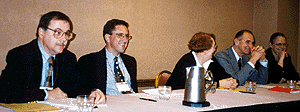 rose and the situation of the peasantry became ever more perilous. By the end of the century, the Autonomists in Dalmatia had lost politically to the National Party, which promoted unity with Croatia, but Dalmatian Serbs by that time were increasingly oriented to unification in a south Slavic state.
rose and the situation of the peasantry became ever more perilous. By the end of the century, the Autonomists in Dalmatia had lost politically to the National Party, which promoted unity with Croatia, but Dalmatian Serbs by that time were increasingly oriented to unification in a south Slavic state.  diversity, by the end of the nineteenth century Croatian regional identity was overshadowed by a Croatian national identity that attempted to blend the traditions of all three regions. Kent used as a primary piece of evidence the curtain that Vlaho Bukovac painted for the new Croatian Provincial Theater in 1895, which drew together real historical figures and cultural movements, but did so selectively. The curtain thus bespeaks the modernity of a distinctive but new synthetic identity that was to become the foundation for the creation of a unified territorial state. (Summarized by Sarah Kent)
diversity, by the end of the nineteenth century Croatian regional identity was overshadowed by a Croatian national identity that attempted to blend the traditions of all three regions. Kent used as a primary piece of evidence the curtain that Vlaho Bukovac painted for the new Croatian Provincial Theater in 1895, which drew together real historical figures and cultural movements, but did so selectively. The curtain thus bespeaks the modernity of a distinctive but new synthetic identity that was to become the foundation for the creation of a unified territorial state. (Summarized by Sarah Kent) 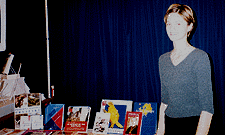
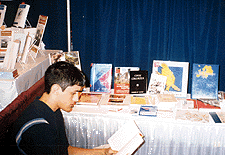
 works by ten of Croatia's best-known naïve artists. They include Ivan Generalic, Josip Generalic, Mirko Virius, Emerik Fejes, Dragan Gazi, Mijo Kovacic , Ivan Lackovic, Ivan Rabuzin, Matija Skurjeni, and Ivan Vecenaj. The organizer and the prime mover of the exhibit is Michael Milkovich, director of the Museum.
works by ten of Croatia's best-known naïve artists. They include Ivan Generalic, Josip Generalic, Mirko Virius, Emerik Fejes, Dragan Gazi, Mijo Kovacic , Ivan Lackovic, Ivan Rabuzin, Matija Skurjeni, and Ivan Vecenaj. The organizer and the prime mover of the exhibit is Michael Milkovich, director of the Museum.  He has also consistently pushed us to have an international dimension, which complements our collection of world art.... The Croatian exhibition and the new millennium provide an ideal time to thank Michael for his extraordinary contribution to the Museum and the community."
He has also consistently pushed us to have an international dimension, which complements our collection of world art.... The Croatian exhibition and the new millennium provide an ideal time to thank Michael for his extraordinary contribution to the Museum and the community." 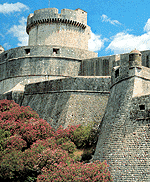 education of young scientists from Croatia, Bosnia and Herzegovina and other Central and Eastern European countries. The organizers have received significant financial support from the Boehringer Ingelheim Foundation and the Ares-Serono Foundation that will sponsor participation of these students (more info http://www.dubrovnik.net). The local ICST organizing board is preparing a half-day visit to Dubrovnik for all participants of the 2nd ICST to promote and emphasize Dubrovnik's cultural and scientific accomplishments throughout history. It is our belief that cultural reflections of Dubrovnik, a world heritage city, are best spread by those who come and witness and we hope that many of the ICST participants will come for another visit to Dubrovnik and Croatia in future. Ivan Dikic, Assistant Member and Group Leader, Ludwig Institute for Cancer Research; Ivan.Dikic@licr.uu.se
education of young scientists from Croatia, Bosnia and Herzegovina and other Central and Eastern European countries. The organizers have received significant financial support from the Boehringer Ingelheim Foundation and the Ares-Serono Foundation that will sponsor participation of these students (more info http://www.dubrovnik.net). The local ICST organizing board is preparing a half-day visit to Dubrovnik for all participants of the 2nd ICST to promote and emphasize Dubrovnik's cultural and scientific accomplishments throughout history. It is our belief that cultural reflections of Dubrovnik, a world heritage city, are best spread by those who come and witness and we hope that many of the ICST participants will come for another visit to Dubrovnik and Croatia in future. Ivan Dikic, Assistant Member and Group Leader, Ludwig Institute for Cancer Research; Ivan.Dikic@licr.uu.se  The Croatian Philatelic Society, founded by ACS member Eck Spahich in the spring of l972 in Borger, Texas, provides a wealth of information on issues of Croatia, Bosnia and Herzegovina, Macedonia, Montenegro, Serbia, Slovenia, the former Yugoslavia, and the Central European-Balkan area.
The Croatian Philatelic Society, founded by ACS member Eck Spahich in the spring of l972 in Borger, Texas, provides a wealth of information on issues of Croatia, Bosnia and Herzegovina, Macedonia, Montenegro, Serbia, Slovenia, the former Yugoslavia, and the Central European-Balkan area. 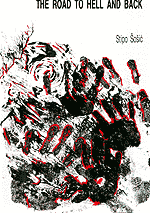 ethnically mixed area in Bosnia. But the conditions in the camps, the brutality, the efforts to destroy the human spirit, and the faith in human dignity and a greater Good which saw both men through were similar. For Frankl, meaning was crucial, for Sosic, prayer was "a cure for all wounds" and faith in God and the actions of good men his salvation. (pp. 117, 122-3)
ethnically mixed area in Bosnia. But the conditions in the camps, the brutality, the efforts to destroy the human spirit, and the faith in human dignity and a greater Good which saw both men through were similar. For Frankl, meaning was crucial, for Sosic, prayer was "a cure for all wounds" and faith in God and the actions of good men his salvation. (pp. 117, 122-3) 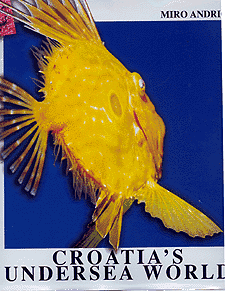 $ 49.95. Order from: Car Herc, Strmeckoga 6a, 10090 Zagreb, Croatia, Tel/Fax 385 1 348 3097, E-Mail: miro.andric@zg.tel.hr
$ 49.95. Order from: Car Herc, Strmeckoga 6a, 10090 Zagreb, Croatia, Tel/Fax 385 1 348 3097, E-Mail: miro.andric@zg.tel.hr 